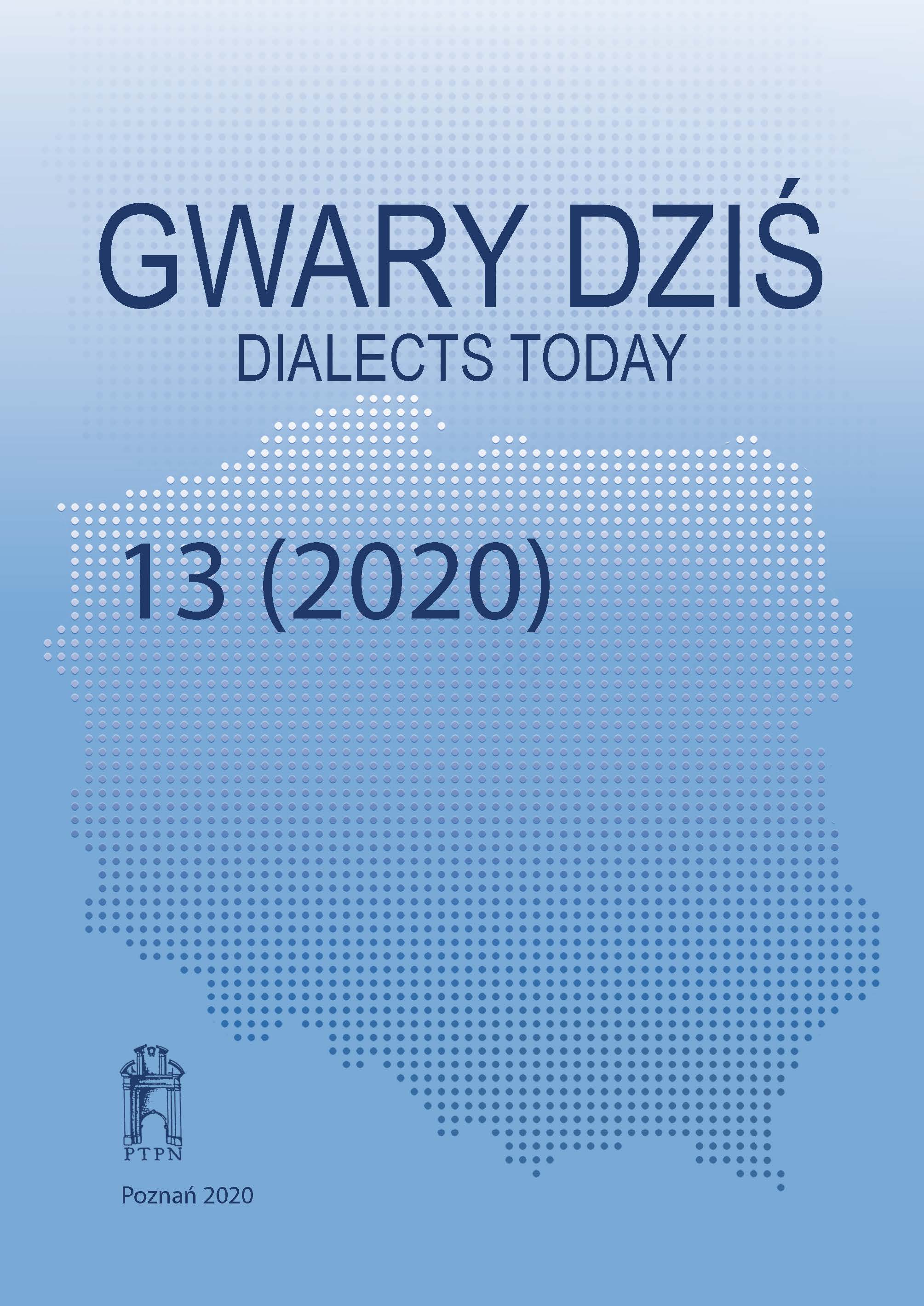Dynamika zmian w obrębie rodzaju gramatycznego rzeczowników gwarowych – wybrane zagadnienia
The dynamics of changes within grammatical gender of dialectal nouns – selected issues
Author(s): Justyna KobusSubject(s): Language studies, Language and Literature Studies, Western Slavic Languages
Published by: Uniwersytet im. Adama Mickiewicza w Poznaniu
Keywords: inflection; grammatical gender; dialect; language of villages.
Summary/Abstract: Due to problems with obtaining the materials and the description thereof, dialectal inflection is an element of language which does not attract lots of dialectologists’ attention. On the other hand, the inflection of Wielkopolska dialects poses more problems in the description because there is no starting point in the form of previous characteristics of inflection that would create a need for acontinuous description that shows the changes in the evolution of a dialect. The language spoken in rural areas in the late 20th and the early 21st centuries has entered a stage of dynamic changes on all its levels. This fact cannot be disregarded in selecting the appropriate research tools. Dialectal inflection cannot be unambiguously categorised, it is full of inconsistencies and deviations from (what seems to be) the adopted paradigm. As a result, it is much more interesting to show it as a flexible creation of oral language i.e. in a dynamic way, resulting from statistical analyses.The dynamics of inflection forms within grammatical gender is a part of a larger monograph dedicated to the gender-related variability of nouns and the change of gender in the course of inflection and the well-recognised opposition of masculine gender and non-masculine gender. My intention was not only to describe phenomena of grammatical gender of the nouns recorded in contemporary Wielkopolska as well as to show the changes against the material from the 1950s–1980s.The gender category defies attempts at restoring some normative order in it. Oral language is particularly susceptible to gender-related variations where the rules of correction are suspended. Oral language tends to be dynamic and this active nature determines the intensity of the specific features of the spoken variety of the Polish language – the right form is created when an act of speech appears (conformity with the general Polish norm does not count – communication prevails). Despite its specificity, the spoken variety stays within the more or less flexible language norm. An analysis of the materials intended to illustrate the dynamics of changes within grammatical gender leads to drawing general conclusions. Dialects are a variety of the national language to which we would like to attribute many distinctive historical and even pre-historical features. However, this is avariety of language which evolves as do the other varieties of the national language. Speakers will always choose forms which suffice for an efficient act of communication. Dialects are at a stage of their development where researchers try to determine elements typical of a dialect and forget to examine their latest structure which results from the latest communication needs of speakers in rural areas.
Journal: Gwary Dziś
- Issue Year: 13/2020
- Issue No: 1
- Page Range: 65-110
- Page Count: 46
- Language: Polish

